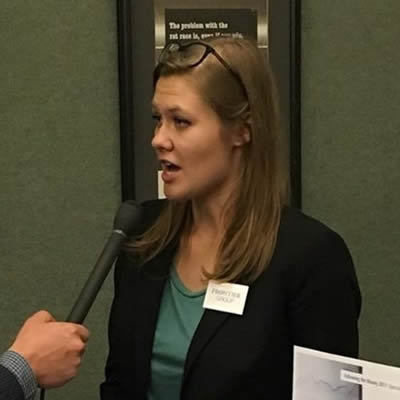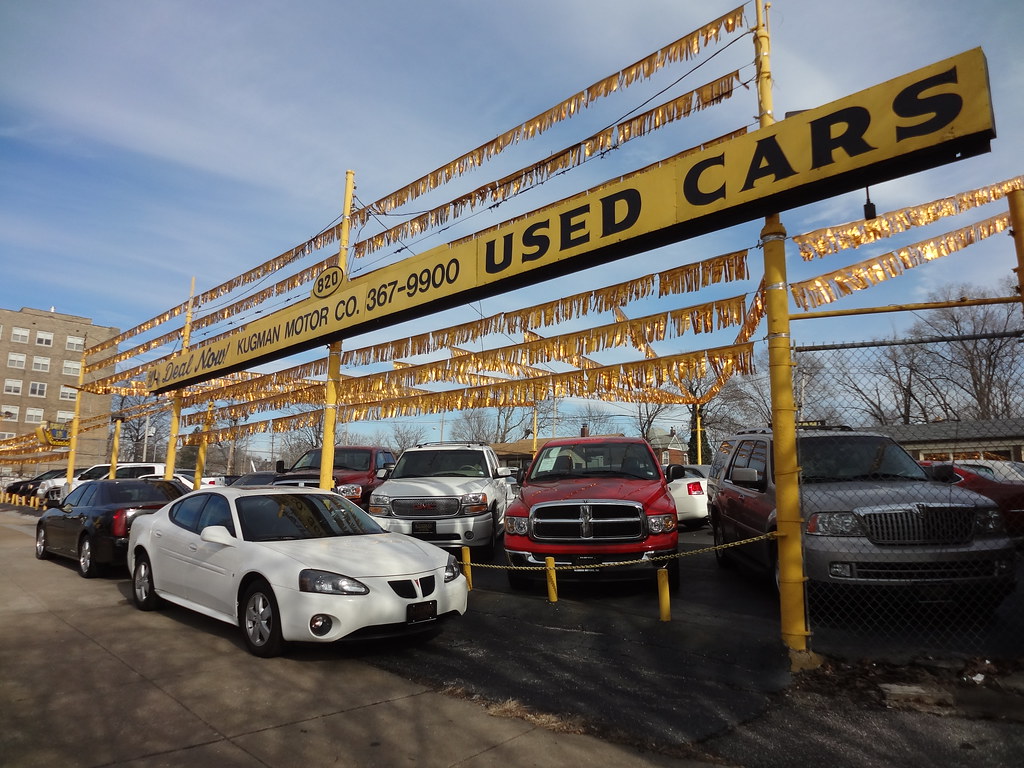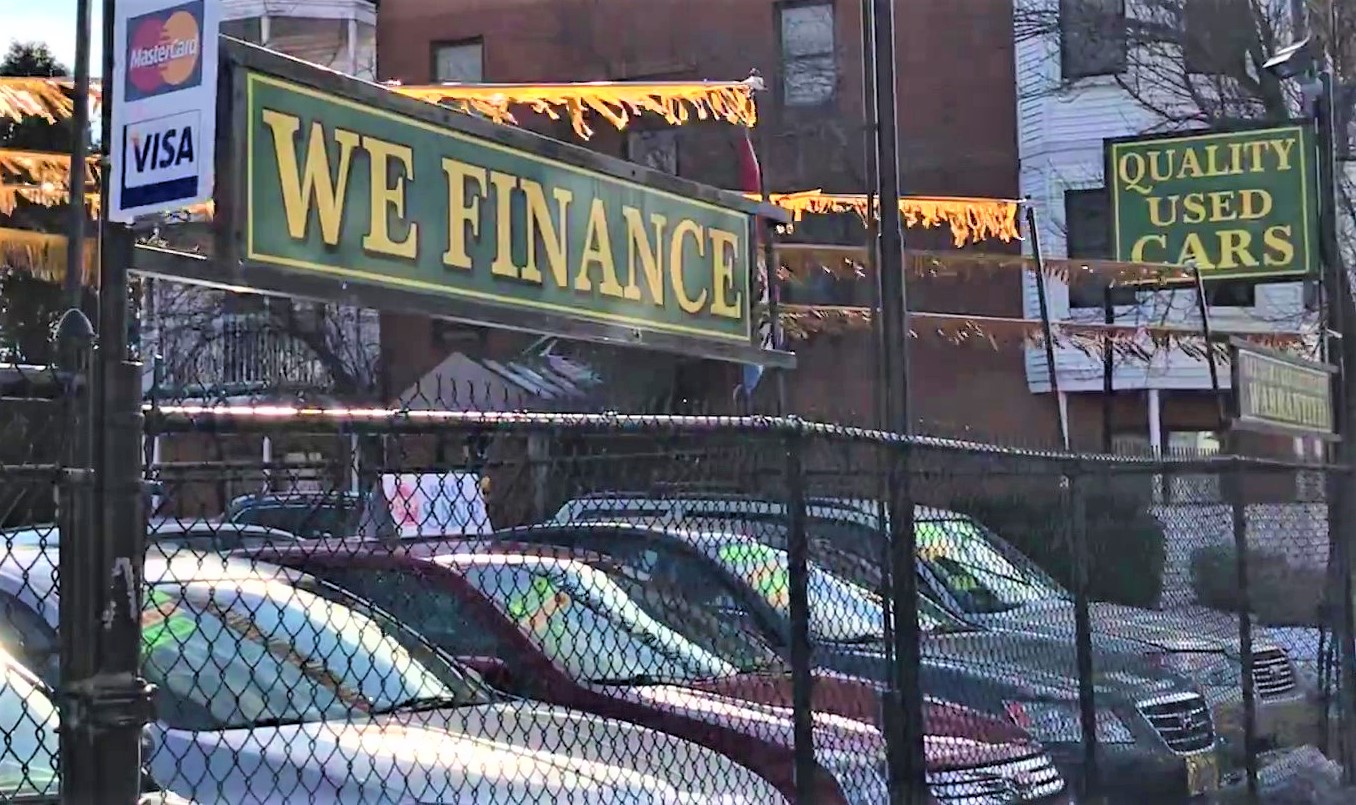
R.J. Cross testimony on auto loans before House Financial Services Committee
Testimony of R.J. Cross, Frontier Group policy analyst, at a hearing on examining discrimination in the automobile loan and insurance industries before the U.S. House of Representatives Committee on Financial Services, Subcommittee on Oversight and Investigations.

Downloads
Download testimony PDF
Watch video of full testimony
Download Driving into Debt: The Hidden Costs of Risky Auto Loans to Consumers and Our Communities
Testimony of R.J. Cross, Policy Analyst, Frontier Group, Testifying on Behalf of Frontier Group and U.S. Public Interest Research Group
At A Hearing On Examining Discrimination in the Automobile Loan and Insurance Industries Before the U.S. House of Representatives Committee on Financial Services, Subcommittee on Oversight and Investigations
The Honorable Al Green, Chairman
1 May 2019
Thank you for the opportunity to appear before you today to discuss the state of U.S. auto lending. I am a policy analyst at Frontier Group, a non-profit public policy think tank and am also testifying today on behalf of the U.S. Public Interest Research Group, with whom we co-authored our recent report, Driving Into Debt. Our report examined how auto lending has changed since the Great Recession, and how those changes have ultimately put consumers at risk.
SCOPE OF PROBLEM
In much of the country, owning a car is a virtual necessity. It is how you get to work, to the grocery store, and to the doctor. A car, in short, is the price of admission to leading a full, productive life. Owning a car is also expensive. Transportation is the second-leading expenditure for American households, behind only housing. Approximately one hour of the average American’s working day is spent earning the money needed to pay for the transportation that enables them to get to work in the first place. These expenses of car ownership drive millions of households to take on debt.
Currently, Americans owe more for their cars than they ever have before. The total amount of outstanding auto debt is over $1.2 trillion. Since the end of 2009, the amount Americans owe on their cars has increased 75 percent (51 percent when adjusted for inflation).
But it is not only that overall auto debt has reached historic levels – the number of Americans who owe for their cars is also at its highest in U.S. history with over 113 million open loan accounts, a jump of nearly 40 percent from 2010 to 2018. In mid-1999, there were approximately 18 auto loan accounts open for every 100 Americans. By mid-2017, that figure had nearly doubled, to 34 accounts per 100 Americans.
And consumers are at risk. Delinquencies are rising. The percentage of auto debt that is seriously delinquent – meaning 90 days late or more – is the highest it has been since 2012 and is still climbing. More than 7 million Americans have missed at least three monthly car payments.
These numbers are concerning on their own. What makes them deeply troubling is that they are happening in a strong U.S. economy. Compared with the size of the U.S. economy, outstanding auto debt is larger now than at any time other than the period between the 2001 and 2007 recessions, at 5.5 percent of gross domestic product.
Something important has been happening in the auto credit market. Since the Recession, the lending practices that have boosted auto sales have also put the financial well-being of millions of American households at risk.
HOW WE GOT HERE
In the aftermath of the 2008 financial crash, investors and lenders alike noticed that auto debt performed relatively well during the Recession. This – coupled with the federal government’s bailout of the auto industry and key lenders – sparked interest across the board in bringing more borrowers into the auto credit market and onto showroom floors. Lenders of all types took steps to do so.
First, lenders loosened standards for prospective borrowers. Immediately following the federal bailout of the auto industry, GMAC publicly stated it would use its bailout funding to offer credit to consumers, lowering the minimum credit score to qualify for financing from 700 down to 621. Other lenders followed suit.
We found in our report that auto debt has risen across all income levels, but it’s risen the fastest among those with the lowest incomes. Since 2009, according to data from the Consumer Financial Protection Bureau, borrowing by residents of low-income neighborhoods has increased nearly twice as quickly as borrowing by residents of high-income neighborhoods.
Lending in the subprime market followed a similar trajectory. During the Recession, subprime lending fell steeply. In 2007, subprime and deep subprime loans accounted for 23 percent of all U.S. auto debt outstanding, a figure that fell to 14 percent by the end of 2009. The surge in subprime lending during the economic recovery caused that figure to bounce back quickly. By 2016, lending to subprime and deep subprime borrowers made up as much as 26 percent of all auto loans originated that year.
In addition to benefiting from low interest rates, lenders used other tools to bring additional borrowers into the marketplace, including lengthening the terms of auto loans.
Extending loan terms brings down the monthly payment. In the era of Netflix and other monthly subscription-based services, the monthly payment is an important measure by which many consumers determine affordability. Low-income borrowers are particularly sensitive to changes in loan maturity according to a 2007 study, suggesting that the longer loan terms of recent years may have been an important spur for the rapid rise in auto loans to low-income households.
While longer loan terms may reduce the monthly payment amount, they also mean that the consumer will pay more over the life of the loan in interest payments, and will spend more time “underwater” on a car – or owing more for the car than it is worth.
Whereas a 48-month loan used to be the industry standard, loans of five or more years have become increasingly commonplace. In 2009, new auto loans with a term of six years or more accounted for 26 percent of all loans originated. By 2017, it was up to 42 percent.
Consumers with a six-year long loan are twice as likely to default as those with a five-year loan. Borrowers with these longer-term loans are also more likely to have a poorer credit history. An analysis by the Consumer Financial Protection Bureau found that the average credit score of a borrower taking out a six-year auto loan is 39 points below that of a borrower with a five-year term auto loan.
This period also saw the rise of more outright abusive and predatory tactics in one part of the auto credit market: dealer financing.
INDIRECT LENDING
A direct loan, or a loan a consumer gets directly from a traditional financial institution like a bank or credit union, is the safest avenue for consumers. There are clear laws, regulations and oversight over this kind of transaction.
Indirect lending is when a consumer finances through a dealership, with the exception of Buy-Here Pay-Here lots which provide in-house financing. In dealer-arranged financing, the dealer is a creditor in this arrangement, selling the loan to another financial institution, and often having the consumer sign a retail installment sales contract. Dealer-arranged financing creates incentives that often work to the detriment of consumers, and it is governed by rules that are often less protective of consumers’ interests.
ABUSE
One major area of abuse is excessive interest rates. Dealers have the ability to mark up the interest rates they receive from the lenders to whom they sell their finance contracts, pocketing the difference as profit.
Having consumers sign a retail installment sales contract not only allows a dealer to charge a higher interest rate, these rates can sometimes exceed state usury limits. In one example, a package of securities Santander Consumer Holdings Inc., one of the largest U.S. auto lending firms, was selling to investors was found to have 57 percent of included loans from the state of New York carrying interest rates that would have been illegally high if it had been the bank making the loan to consumers directly. Because those contracts were indirect loans, those interest rates were legal.
There’s also been evidence of lenders failing to verify the income of borrowers. For example, in 2017, Santander Bank was found by Moody’s to have verified the income of borrowers on only 8 percent of auto loans it then bundled into $1 billion worth of bonds and sold to investors. At dealerships, there have been instances of car salespersons raising the reported income of a consumer when shopping around a loan in order to ensure the consumer qualifies for financing, even if they ultimately can’t afford to repay the loan. In key respects, auto lending in the last decade has been a “Groundhog Day”-like repeat of many of the same practices that contributed to the mortgage crisis.
Dealer-arranged financing has also enabled discriminatory pricing. Since its creation, the Consumer Financial Protection Bureau has investigated a number of large captive finance groups that work with dealers to provide indirect financing for charging borrowers of color higher interest rates than similarly situated white borrowers. This includes some of the largest indirect lending firms in the nation, like Toyota Motor Credit, whose policies led to many African-American borrowers paying $200 more on average for financing. These CFPB investigations had repeatedly found that lenders giving dealers the ability and incentive to mark up interest rates enables this kind of discrimination.
In 2018, however, Congress passed and President Trump signed legislation revoking the CFPB guidance on indirect auto lending that had provided notice to lenders that actions like those against Toyota Motor Credit and other lenders such as Ally, American Honda Finance and Fifth Third Bank may occur. This congressional action, while it does not alter the CFPB’s statutory authority to address discrimination in auto lending, may make it more likely that discriminatory auto lending practices will go unchallenged.
These are only a few examples of the ways dealer financing threatens the financial well-being of Americans. There are add-on products dealers can make to sound mandatory, and yo-yo financing practices that force consumers to renegotiate after they were told the deal was done. The entire list of threats consumers – and particularly the most vulnerable amongst us – face is appalling. That so little action has been taken to stop these predatory behaviors is even more so.
CONCLUSION
Americans currently owe more for our cars than we have at any point in history. More of us are making monthly car payments and we’re paying them off for longer. Delinquencies are rising even though the economy is strong, and it’s in large part due to lending practices designed to get more people into a new car as soon as possible, including abusive and deceptive tactics that target borrowers with the most to lose. I think we can all agree that American consumers deserve better.
Topics
Authors
R.J. Cross
Policy Analyst, Frontier Group
R.J. focuses on data privacy issues and the commercialization of personal data in the digital age. Her work ranges from consumer harms like scams and data breaches, to manipulative targeted advertising, to keeping kids safe online. In her work at Frontier Group, she has authored research reports on government transparency, predatory auto lending and consumer debt. Her work has appeared in WIRED magazine, CBS Mornings and USA Today, among other outlets. When she’s not protecting the public interest, she is an avid reader, fiction writer and birder.
Find Out More

How do dating apps use my data? A video explainer

Gasoline prices are setting records. But what about gasoline bills?

The Auto Lemon Index

